#interior reference
Explore tagged Tumblr posts
Text
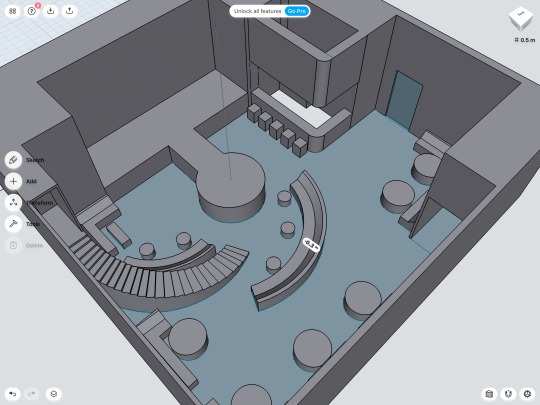
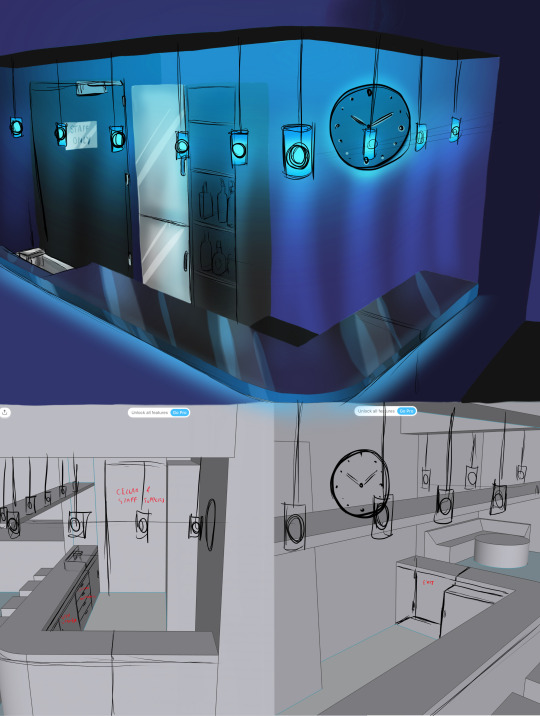
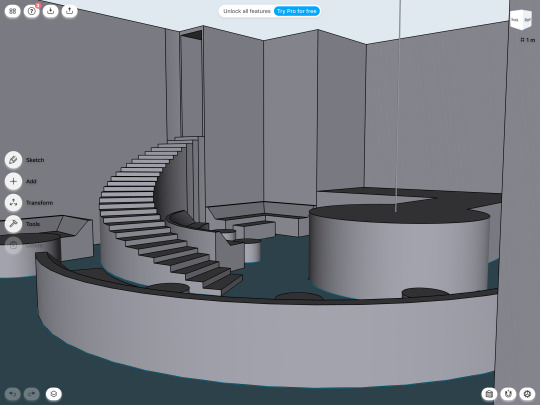


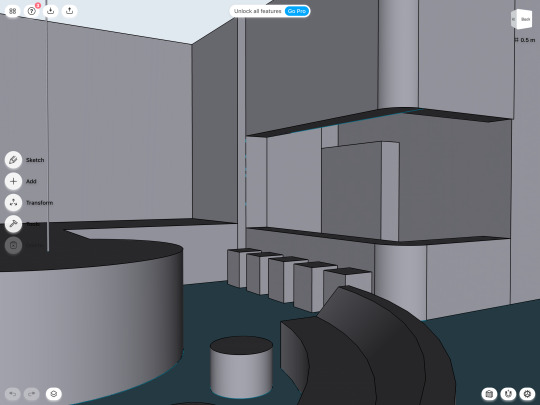

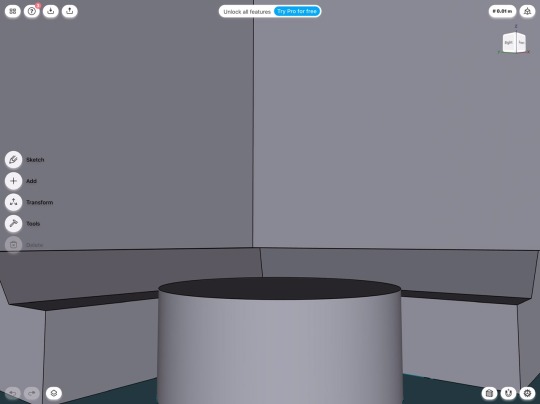
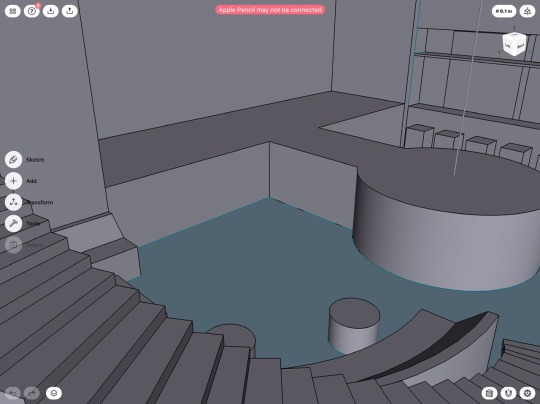

Was it a bit crazy of me to model the whole night club where Once In A Blue Moon is set? Maybe, but it did help me a lot to keep the club consistent and draw the characters with the proper scale ^^
You can see here illustrations from the book, and the screen shots I based myself on. Some of them aren't the exact one, I struggled digging up these because I had so many files laying about, and a lot of screenshots to pick from!
Originally done in 2020
Also, am I plugging my book in most of my posts? Yes. Yes I am.
Please go read it, it would mean the world to me! Even if it's a bit cheesy ^^
(AO3 link!)
#half human#original character#once in a blue moon#oiabm#modern centaurs#centaur#centaur au#taur#reference#interior reference#before and after#behind the scenes#graphic novel#novel#pole dacing#night club#interior design
12 notes
·
View notes
Text
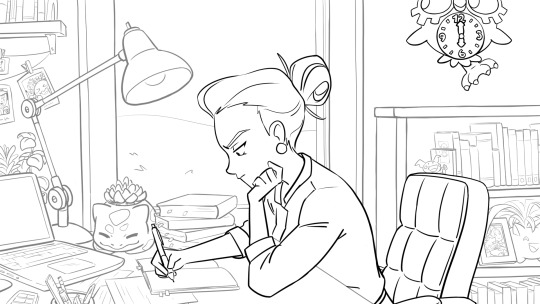
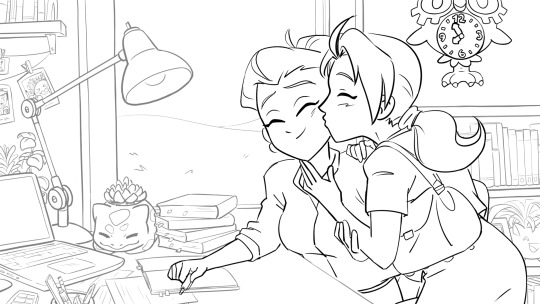

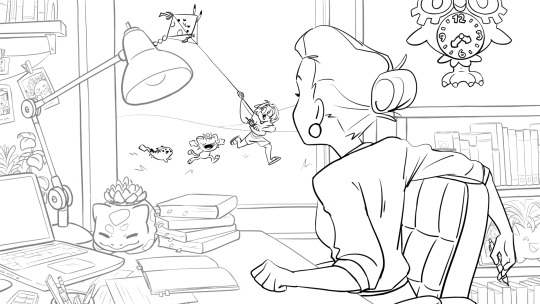
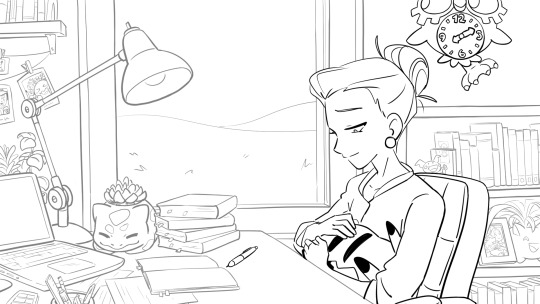
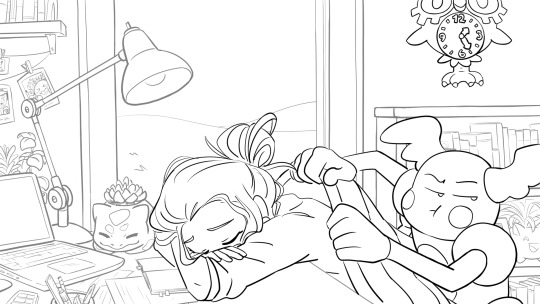
Jessie studies hard for her pokemon medical license exams.
#(clenches fist) i need them all to have a soft epilogue#in reference to Lofi Study Stream Girl because i'm too lazy to find out what the interior of the Ketchum home looks like u__u#hanamusashipping#ransart
33K notes
·
View notes
Text

oby jeggy is a different kind of dsfkdsf so here is them from the first fic in that series, i will touch you with my mind by my love @itsjaywalkers
#jegulus#jegulus fanart#marauders fanart#regulus black#james potter#james x regulus#marauders#regulus black fanart#james potter fanart#starchaser#sunseeker#regulus x james#marauders era#hp#mine#my art#i fully ignored how cars work man there is a steering wheel somewhere technically#i looked at so many reference pictures of car interiors and realised#(after already having commited to the angle)#that this is not a view you could get from two people sitting in the front seat of a car. but alas. we ignore cars#less ignorable is the fact that somehow not just the car anatomy but also the people anatomy in this would just not work. how do legs ?????#i tried my best but even 24601 references couldnt help me out here so eh...#but laurie screamed at me about this yesterday so id say i succeded in what i had actually wanted to accomplish :)
6K notes
·
View notes
Text

Metropolitan Toronto Reference Library, Toronto, 1973-77.
Architect: Raymond Moriyama
#architecture#modernism#library#interior#Raymond Moriyama#Metropolitan Toronto Reference Library#Toronto#Ontario#Canada#1970s
6K notes
·
View notes
Text
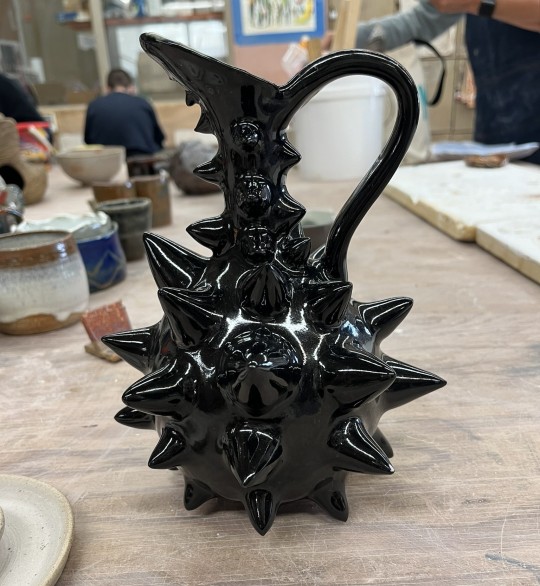
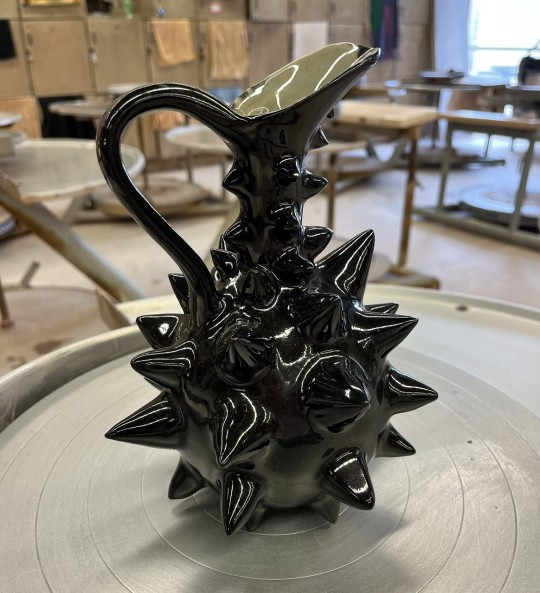
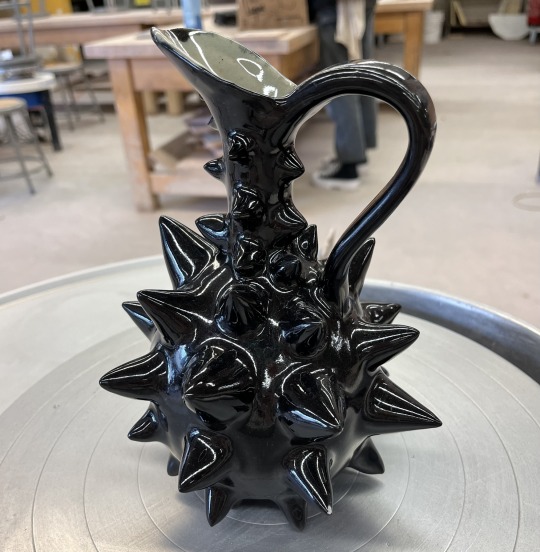
LOOK AT THIS VASE I MADE IN MY CERAMCS CLASS IT WAS REALLY HARD AND THERE WERE SO MANY RISKS BUT I DID IT AND NOTHING WENT WRONG ITS A MIRACLE (also i know NOW it looks like ferrofluid, but it was actually not the intention from the start LOL) If you're curious as to the inspo + process, it was inspired by this minoan jug on the left! It was made in two parts, and was originally supposed to be sleeker, longer, and smaller spikes but uhh look I'm not very good at ceramics LOL. So the size of the spikes and the more round shape.. already not on purpose, a byproduct of my lack of skill.
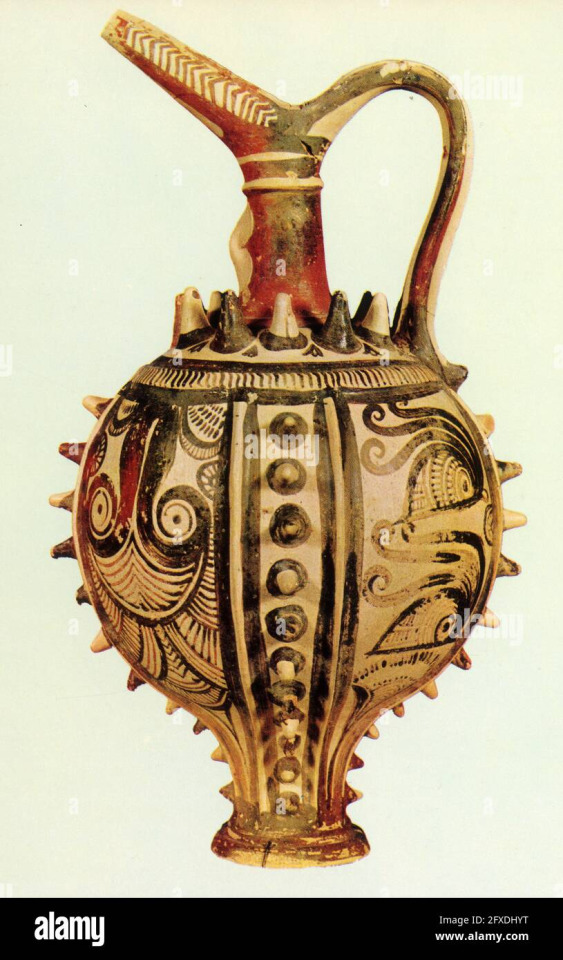

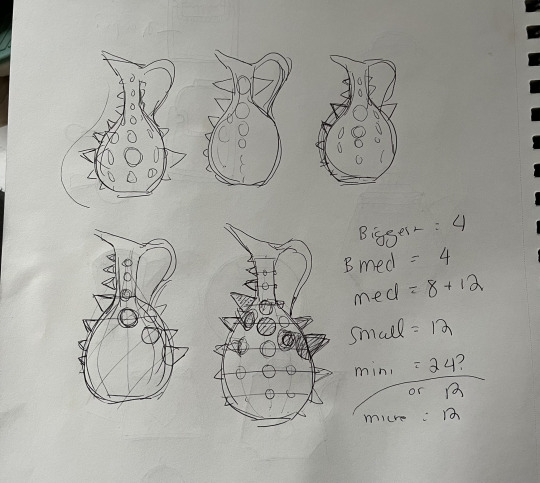
There was a lot of waffling on what colors I wanted to do, I had floated Squeakoid colors (white base, colorful spikes), all black, tenmoku (black but breaks brown), as well as half and half.


I decided on black in the end because DARK GOTH VIBES and my teacher felt the shape was so much already that simple black would highlight the silhouette and not be too busy. And that's how in the end it turned into a ferrofluid vase by accident LMFAO
#ceramics#spiked vase#mace vase#my husband said “mace vase” as soon as he saw it#and all i could say was i wish i thought of that first LOL#the mace shape was not intentional as i said so#i had none of these clever thoughts#ferrofluid#someone on twitter said ferrofluid flagon#rofl#people were also saying it's venom as a vase#like eddie i'm a vase now#AND there's people saying it's like harkonnen interior design LMFAO#the amount of references people are pulling is so funny
1K notes
·
View notes
Text
Fantasy Guide to Interiors
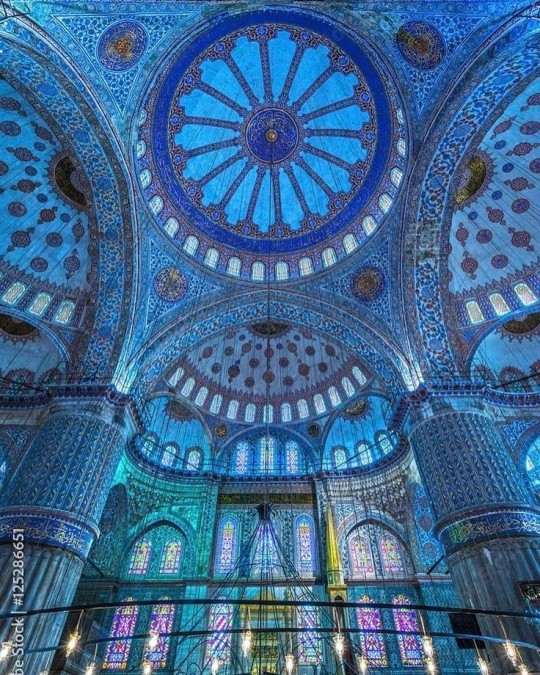
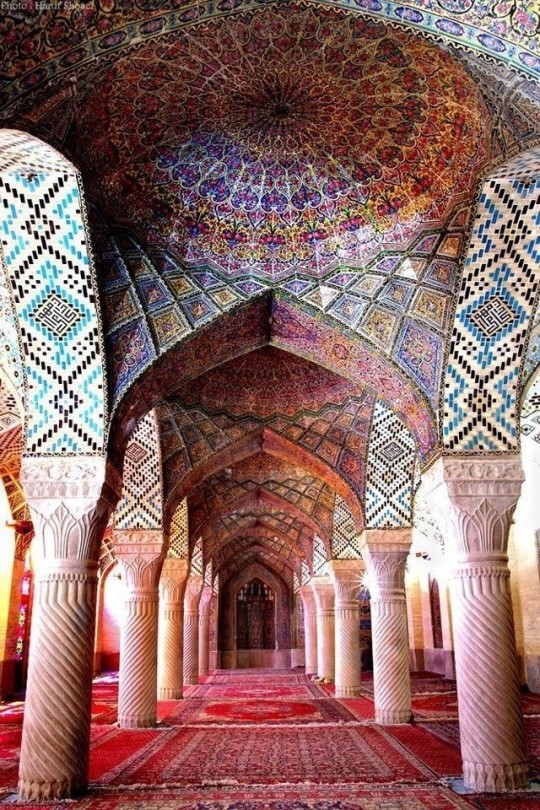
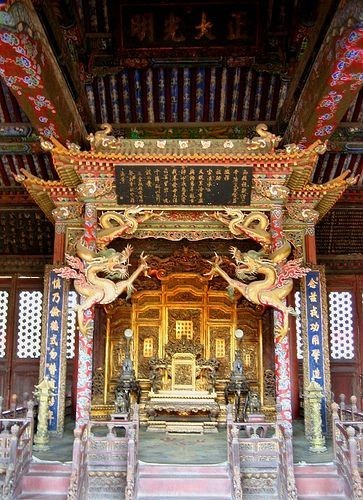
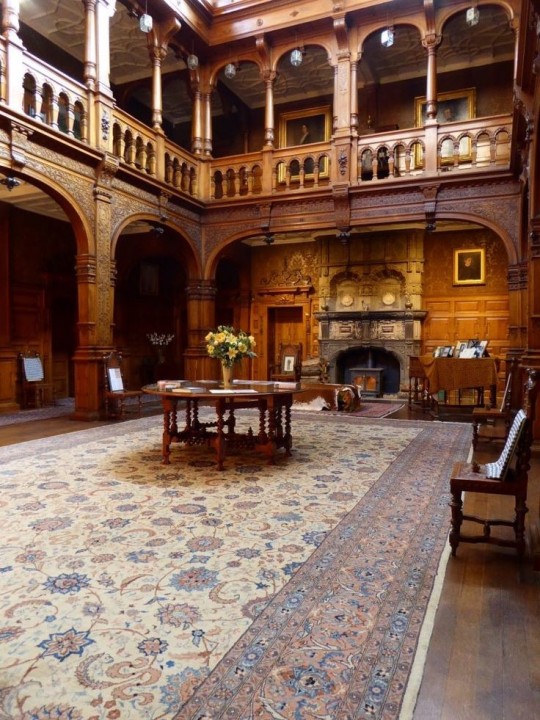
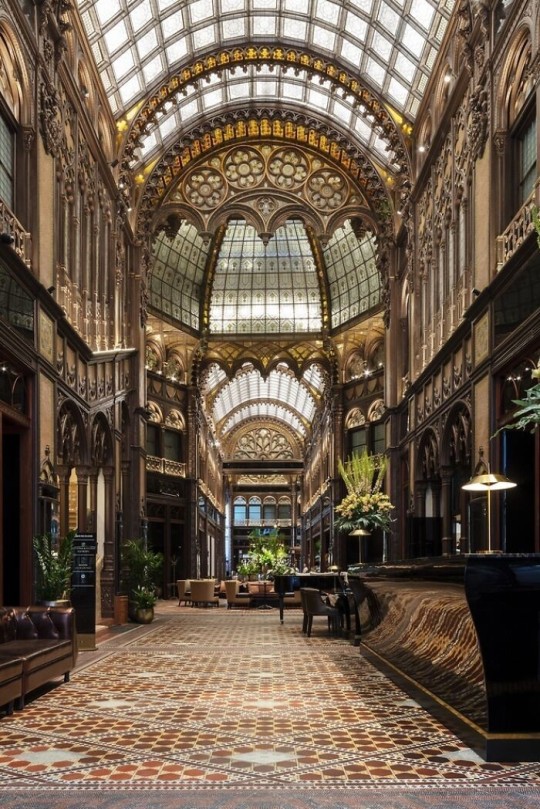
As a followup to the very popular post on architecture, I decided to add onto it by exploring the interior of each movement and the different design techniques and tastes of each era. This post at be helpful for historical fiction, fantasy or just a long read when you're bored.
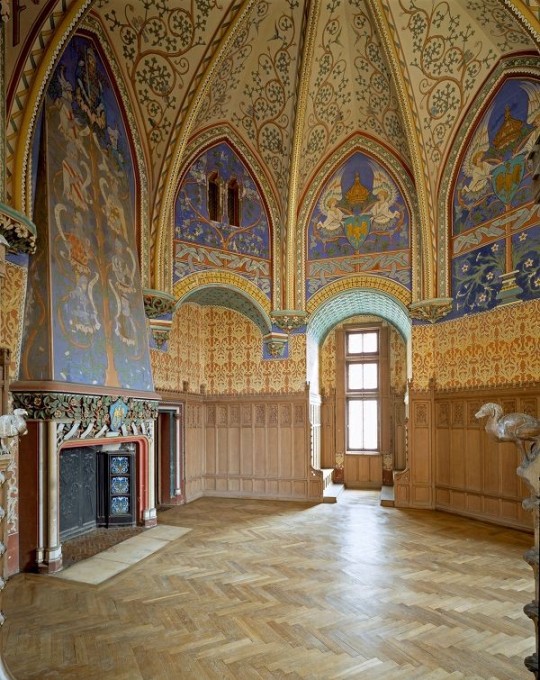
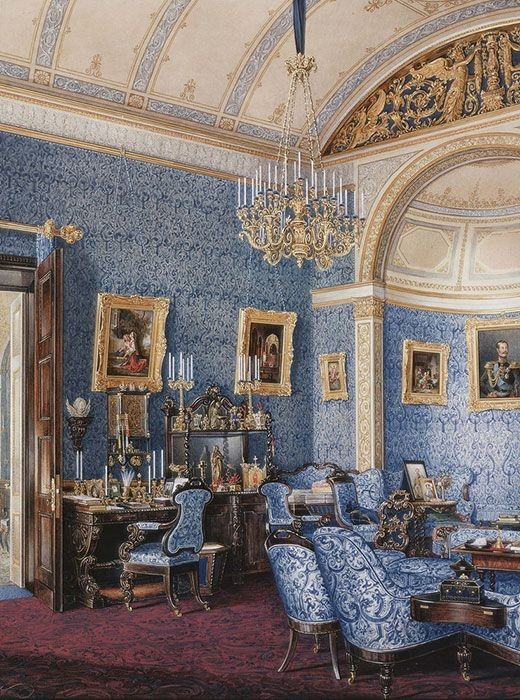
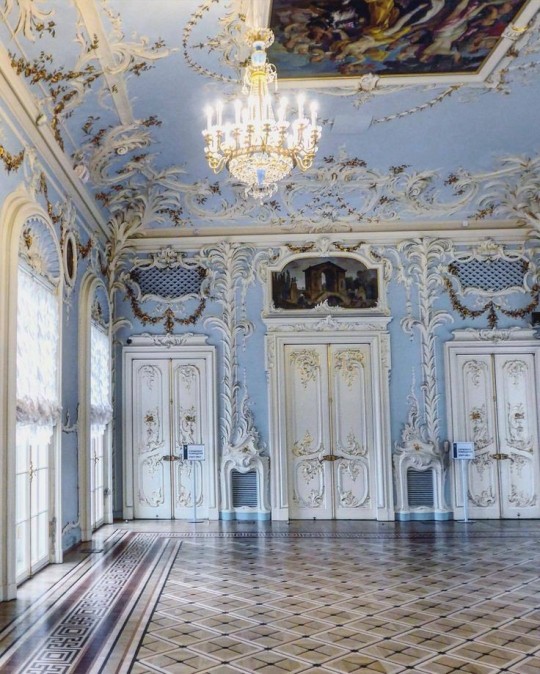
Interior Design Terms
Reeding and fluting: Fluting is a technique that consists a continuous pattern of concave grooves in a flat surface across a surface. Reeding is it's opposite.
Embossing: stamping, carving or moulding a symbol to make it stand out on a surface.
Paneling: Panels of carved wood or fabric a fixed to a wall in a continuous pattern.
Gilding: the use of gold to highlight features.
Glazed Tile: Ceramic or porcelain tiles coated with liquid coloured glass or enamel.
Column: A column is a pillar of stone or wood built to support a ceiling. We will see more of columns later on.
Bay Window: The Bay Window is a window projecting outward from a building.
Frescos: A design element of painting images upon wet plaster.
Mosaic: Mosaics are a design element that involves using pieces of coloured glass and fitted them together upon the floor or wall to form images.
Mouldings: ornate strips of carved wood along the top of a wall.
Wainscoting: paneling along the lower portion of a wall.
Chinoiserie: A European take on East Asian art. Usually seen in wallpaper.
Clerestory: A series of eye-level windows.
Sconces: A light fixture supported on a wall.
Niche: A sunken area within a wall.
Monochromatic: Focusing on a single colour within a scheme.
Ceiling rose: A moulding fashioned on the ceiling in the shape of a rose usually supporting a light fixture.
Baluster: the vertical bars of a railing.
Façade: front portion of a building
Lintel: Top of a door or window.
Portico: a covered structure over a door supported by columns
Eaves: the part of the roof overhanging from the building
Skirting: border around lower length of a wall
Ancient Greece
Houses were made of either sun-dried clay bricks or stone which were painted when they dried. Ground floors were decorated with coloured stones and tiles called Mosaics. Upper level floors were made from wood. Homes were furnished with tapestries and furniture, and in grand homes statues and grand altars would be found. Furniture was very skillfully crafted in Ancient Greece, much attention was paid to the carving and decoration of such things. Of course, Ancient Greece is ancient so I won't be going through all the movements but I will talk a little about columns.
Doric: Doric is the oldest of the orders and some argue it is the simplest. The columns of this style are set close together, without bases and carved with concave curves called flutes. The capitals (the top of the column) are plain often built with a curve at the base called an echinus and are topped by a square at the apex called an abacus. The entablature is marked by frieze of vertical channels/triglyphs. In between the channels would be detail of carved marble. The Parthenon in Athens is your best example of Doric architecture.
Ionic: The Ionic style was used for smaller buildings and the interiors. The columns had twin volutes, scroll-like designs on its capital. Between these scrolls, there was a carved curve known as an egg and in this style the entablature is much narrower and the frieze is thick with carvings. The example of Ionic Architecture is the Temple to Athena Nike at the Athens Acropolis.
Corinthian: The Corinthian style has some similarities with the Ionic order, the bases, entablature and columns almost the same but the capital is more ornate its base, column, and entablature, but its capital is far more ornate, commonly carved with depictions of acanthus leaves. The style was more slender than the others on this list, used less for bearing weight but more for decoration. Corinthian style can be found along the top levels of the Colosseum in Rome.
Tuscan: The Tuscan order shares much with the Doric order, but the columns are un-fluted and smooth. The entablature is far simpler, formed without triglyphs or guttae. The columns are capped with round capitals.
Composite: This style is mixed. It features the volutes of the Ionic order and the capitals of the Corinthian order. The volutes are larger in these columns and often more ornate. The column's capital is rather plain. for the capital, with no consistent differences to that above or below the capital.
Ancient Rome
Rome is well known for its outward architectural styles. However the Romans did know how to add that rizz to the interior. Ceilings were either vaulted or made from exploded beams that could be painted. The Romans were big into design. Moasics were a common interior sight, the use of little pieces of coloured glass or stone to create a larger image. Frescoes were used to add colour to the home, depicting mythical figures and beasts and also different textures such as stonework or brick. The Romans loved their furniture. Dining tables were low and the Romans ate on couches. Weaving was a popular pastime so there would be tapestries and wall hangings in the house. Rich households could even afford to import fine rugs from across the Empire. Glass was also a feature in Roman interior but windows were usually not paned as large panes were hard to make. Doors were usually treated with panels that were carved or in lain with bronze.
Ancient Egypt
Egypt was one of the first great civilisations, known for its immense and grand structures. Wealthy Egyptians had grand homes. The walls were painted or plastered usually with bright colours and hues. The Egyptians are cool because they mapped out their buildings in such a way to adhere to astrological movements meaning on special days if the calendar the temple or monuments were in the right place always. The columns of Egyptian where thicker, more bulbous and often had capitals shaped like bundles of papyrus reeds. Woven mats and tapestries were popular decor. Motifs from the river such as palms, papyrus and reeds were popular symbols used.
Ancient Africa
African Architecture is a very mixed bag and more structurally different and impressive than Hollywood would have you believe. Far beyond the common depictions of primitive buildings, the African nations were among the giants of their time in architecture, no style quite the same as the last but just as breathtaking.
Rwandan Architecture: The Rwandans commonly built of hardened clay with thatched roofs of dried grass or reeds. Mats of woven reeds carpeted the floors of royal abodes. These residences folded about a large public area known as a karubanda and were often so large that they became almost like a maze, connecting different chambers/huts of all kinds of uses be they residential or for other purposes.
Ashanti Architecture: The Ashanti style can be found in present day Ghana. The style incorporates walls of plaster formed of mud and designed with bright paint and buildings with a courtyard at the heart, not unlike another examples on this post. The Ashanti also formed their buildings of the favourite method of wattle and daub.
Nubian Architecture: Nubia, in modern day Ethiopia, was home to the Nubians who were one of the world's most impressive architects at the beginning of the architecture world and probably would be more talked about if it weren't for the Egyptians building monuments only up the road. The Nubians were famous for building the speos, tall tower-like spires carved of stone. The Nubians used a variety of materials and skills to build, for example wattle and daub and mudbrick. The Kingdom of Kush, the people who took over the Nubian Empire was a fan of Egyptian works even if they didn't like them very much. The Kushites began building pyramid-like structures such at the sight of Gebel Barkal
Japanese Interiors
Japenese interior design rests upon 7 principles. Kanso (簡素)- Simplicity, Fukinsei (不均整)- Asymmetry, Shizen (自然)- Natural, Shibumi (渋味) – Simple beauty, Yugen (幽玄)- subtle grace, Datsuzoku (脱俗) – freedom from habitual behaviour, Seijaku (静寂)- tranquillity.
Common features of Japanese Interior Design:
Shoji walls: these are the screens you think of when you think of the traditional Japanese homes. They are made of wooden frames, rice paper and used to partition
Tatami: Tatami mats are used within Japanese households to blanket the floors. They were made of rice straw and rush straw, laid down to cushion the floor.
Genkan: The Genkan was a sunken space between the front door and the rest of the house. This area is meant to separate the home from the outside and is where shoes are discarded before entering.
Japanese furniture: often lowest, close to the ground. These include tables and chairs but often tanked are replaced by zabuton, large cushions. Furniture is usually carved of wood in a minimalist design.
Nature: As both the Shinto and Buddhist beliefs are great influences upon architecture, there is a strong presence of nature with the architecture. Wood is used for this reason and natural light is prevalent with in the home. The orientation is meant to reflect the best view of the world.
Islamic World Interior
The Islamic world has one of the most beautiful and impressive interior design styles across the world. Colour and detail are absolute staples in the movement. Windows are usually not paned with glass but covered in ornate lattices known as jali. The jali give ventilation, light and privacy to the home. Islamic Interiors are ornate and colourful, using coloured ceramic tiles. The upper parts of walls and ceilings are usually flat decorated with arabesques (foliate ornamentation), while the lower wall areas were usually tiled. Features such as honeycombed ceilings, horseshoe arches, stalactite-fringed arches and stalactite vaults (Muqarnas) are prevalent among many famous Islamic buildings such as the Alhambra and the Blue Mosque.
Byzantine (330/395–1453 A. D)
The Byzantine Empire or Eastern Roman Empire was where eat met west, leading to a melting pot of different interior designs based on early Christian styles and Persian influences. Mosaics are probably what you think of when you think of the Byzantine Empire. Ivory was also a popular feature in the Interiors, with carved ivory or the use of it in inlay. The use of gold as a decorative feature usually by way of repoussé (decorating metals by hammering in the design from the backside of the metal). Fabrics from Persia, heavily embroidered and intricately woven along with silks from afar a field as China, would also be used to upholster furniture or be used as wall hangings. The Byzantines favoured natural light, usually from the use of copolas.
Indian Interiors
India is of course, the font of all intricate designs. India's history is sectioned into many eras but we will focus on a few to give you an idea of prevalent techniques and tastes.
The Gupta Empire (320 – 650 CE): The Gupta era was a time of stone carving. As impressive as the outside of these buildings are, the Interiors are just as amazing. Gupta era buildings featured many details such as ogee (circular or horseshoe arch), gavaksha/chandrashala (the motif centred these arches), ashlar masonry (built of squared stone blocks) with ceilings of plain, flat slabs of stone.
Delhi Sultanate (1206–1526): Another period of beautifully carved stone. The Delhi sultanate had influence from the Islamic world, with heavy uses of mosaics, brackets, intricate mouldings, columns and and hypostyle halls.
Mughal Empire (1526–1857): Stonework was also important on the Mughal Empire. Intricately carved stonework was seen in the pillars, low relief panels depicting nature images and jalis (marble screens). Stonework was also decorated in a stye known as pietra dura/parchin kari with inscriptions and geometric designs using colored stones to create images. Tilework was also popular during this period. Moasic tiles were cut and fitted together to create larger patters while cuerda seca tiles were coloured tiles outlined with black.
Chinese Interiors
Common features of Chinese Interiors
Use of Colours: Colour in Chinese Interior is usually vibrant and bold. Red and Black are are traditional colours, meant to bring luck, happiness, power, knowledge and stability to the household.
Latticework: Lattices are a staple in Chinese interiors most often seen on shutters, screens, doors of cabinets snf even traditional beds.
Lacquer: Multiple coats of lacquer are applied to furniture or cabinets (now walls) and then carved. The skill is called Diaoqi (雕漆).
Decorative Screens: Screens are used to partition off part of a room. They are usually of carved wood, pained with very intricate murals.
Shrines: Spaces were reserved on the home to honour ancestors, usually consisting of an altar where offerings could be made.
Of course, Chinese Interiors are not all the same through the different eras. While some details and techniques were interchangeable through different dynasties, usually a dynasty had a notable style or deviation. These aren't all the dynasties of course but a few interesting examples.
Song Dynasty (960–1279): The Song Dynasty is known for its stonework. Sculpture was an important part of Song Dynasty interior. It was in this period than brick and stone work became the most used material. The Song Dynasty was also known for its very intricate attention to detail, paintings, and used tiles.
Ming Dynasty(1368–1644): Ceilings were adorned with cloisons usually featuring yellow reed work. The floors would be of flagstones usually of deep tones, mostly black. The Ming Dynasty favoured richly coloured silk hangings, tapestries and furnishings. Furniture was usually carved of darker woods, arrayed in a certain way to bring peace to the dwelling.
Han Dynasty (206 BC-220 AD): Interior walls were plastered and painted to show important figures and scenes. Lacquer, though it was discovered earlier, came into greater prominence with better skill in this era.
Tang Dynasty (618–907) : The colour palette is restrained, reserved. But the Tang dynasty is not without it's beauty. Earthenware reached it's peak in this era, many homes would display fine examples as well. The Tang dynasty is famous for its upturned eaves, the ceilings supported by timber columns mounted with metal or stone bases. Glazed tiles were popular in this era, either a fixed to the roof or decorating a screen wall.
Romanesque (6th -11th century/12th)
Romanesque Architecture is a span between the end of Roman Empire to the Gothic style. Taking inspiration from the Roman and Byzantine Empires, the Romanesque period incorporates many of the styles. The most common details are carved floral and foliage symbols with the stonework of the Romanesque buildings. Cable mouldings or twisted rope-like carvings would have framed doorways. As per the name, Romansque Interiors relied heavily on its love and admiration for Rome. The Romanesque style uses geometric shapes as statements using curves, circles snf arches. The colours would be clean and warm, focusing on minimal ornamentation.
Gothic Architecture (12th Century - 16th Century)
The Gothic style is what you think of when you think of old European cathedrals and probably one of the beautiful of the styles on this list and one of most recognisable. The Gothic style is a dramatic, opposing sight and one of the easiest to describe. Decoration in this era became more ornate, stonework began to sport carving and modelling in a way it did not before. The ceilings moved away from barreled vaults to quadripartite and sexpartite vaulting. Columns slimmed as other supportive structures were invented. Intricate stained glass windows began their popularity here. In Gothic structures, everything is very symmetrical and even.
Mediaeval (500 AD to 1500)
Interiors of mediaeval homes are not quite as drab as Hollywood likes to make out. Building materials may be hidden by plaster in rich homes, sometimes even painted. Floors were either dirt strewn with rushes or flagstones in larger homes. Stonework was popular, especially around fireplaces. Grand homes would be decorated with intricate woodwork, carved heraldic beasts and wall hangings of fine fabrics.
Renaissance (late 1300s-1600s)
The Renaissance was a period of great artistry and splendor. The revival of old styles injected symmetry and colour into the homes. Frescoes were back. Painted mouldings adorned the ceilings and walls. Furniture became more ornate, fixed with luxurious upholstery and fine carvings. Caryatids (pillars in the shape of women), grotesques, Roman and Greek images were used to spruce up the place. Floors began to become more intricate, with coloured stone and marble. Modelled stucco, sgraffiti arabesques (made by cutting lines through a layer of plaster or stucco to reveal an underlayer), and fine wall painting were used in brilliant combinations in the early part of the 16th century.
Tudor Interior (1485-1603)
The Tudor period is a starkly unique style within England and very recognisable. Windows were fixed with lattice work, usually casement. Stained glass was also in in this period, usually depicting figures and heraldic beasts. Rooms would be panelled with wood or plastered. Walls would be adorned with tapestries or embroidered hangings. Windows and furniture would be furnished with fine fabrics such as brocade. Floors would typically be of wood, sometimes strewn with rush matting mixed with fresh herbs and flowers to freshen the room.
Baroque (1600 to 1750)
The Baroque period was a time for splendor and for splashing the cash. The interior of a baroque room was usually intricate, usually of a light palette, featuring a very high ceiling heavy with detail. Furniture would choke the room, ornately carved and stitched with very high quality fabrics. The rooms would be full of art not limited to just paintings but also sculptures of marble or bronze, large intricate mirrors, moldings along the walls which may be heavily gilded, chandeliers and detailed paneling.
Victorian (1837-1901)
We think of the interiors of Victorian homes as dowdy and dark but that isn't true. The Victorians favoured tapestries, intricate rugs, decorated wallpaper, exquisitely furniture, and surprisingly, bright colour. Dyes were more widely available to people of all stations and the Victorians did not want for colour. Patterns and details were usually nature inspired, usually floral or vines. Walls could also be painted to mimic a building material such as wood or marble and most likely painted in rich tones. The Victorians were suckers for furniture, preferring them grandly carved with fine fabric usually embroidered or buttoned. And they did not believe in minimalism. If you could fit another piece of furniture in a room, it was going in there. Floors were almost eclusively wood laid with the previously mentioned rugs. But the Victorians did enjoy tiled floors but restricted them to entrances. The Victorians were quite in touch with their green thumbs so expect a lot of flowers and greenery inside. with various elaborately decorated patterned rugs. And remember, the Victorians loved to display as much wealth as they could. Every shelf, cabinet, case and ledge would be chocked full of ornaments and antiques.
Edwardian/The Gilded Age/Belle Epoque (1880s-1914)
This period (I've lumped them together for simplicity) began to move away from the deep tones and ornate patterns of the Victorian period. Colour became more neutral. Nature still had a place in design. Stained glass began to become popular, especially on lampshades and light fixtures. Embossing started to gain popularity and tile work began to expand from the entrance halls to other parts of the house. Furniture began to move away from dark wood, some families favouring breathable woods like wicker. The rooms would be less cluttered.
Art Deco (1920s-1930s)
The 1920s was a time of buzz and change. Gone were the refined tastes of the pre-war era and now the wow factor was in. Walls were smoother, buildings were sharper and more jagged, doorways and windows were decorated with reeding and fluting. Pastels were in, as was the heavy use of black and white, along with gold. Mirrors and glass were in, injecting light into rooms. Gold, silver, steel and chrome were used in furnishings and decor. Geometric shapes were a favourite design choice. Again, high quality and bold fabrics were used such as animal skins or colourful velvet. It was all a rejection of the Art Noveau movement, away from nature focusing on the man made.
Modernism (1930 - 1965)
Modernism came after the Art Deco movement. Fuss and feathers were out the door and now, practicality was in. Materials used are shown as they are, wood is not painted, metal is not coated. Bright colours were acceptable but neutral palettes were favoured. Interiors were open and favoured large windows. Furniture was practical, for use rather than the ornamentation, featuring plain details of any and geometric shapes. Away from Art Deco, everything is straight, linear and streamlined.
#This took forever#I'm very tired#But enjoy#I covered as much as I could find#Fantasy Guide to interiors#interior design#Architecture#writings#writing resources#Writing reference#Writing advice#Writer's research#writing research#Writer's rescources#Writing help#Mediaeval#Renaissance#Chinese Interiors#Japanese Interiors#Indian interiors#writing#writeblr#writing reference#writing advice#writer#spilled words#writers
3K notes
·
View notes
Text










Interior shots of the USS Enterprise NCC-1701 Star Trek: The Original Series (1966-69) · ˚ ⊹ ⋆ . ✧ ˚ ⊹ ⋆ . ˚ . ✧
#the enterprise#my wife#home#!!!!#star trek#star trek the original series#star trek tos#set design#retrofuturism#retro#vintage#space#film#classic#history#uss enterprise#interiors#reference#liminal spaces#sci fi#science fiction#captain kirk#spock
799 notes
·
View notes
Text

Supernatural September | Day 1 - On the road
#spnsept24#destiel#destiel fanart#destiel art#dean Winchester#castiel#I’m 11 days late to this but shh lol#I wanna do this prompt list bc I love prompt lists lmao#was I a chicken and decided to do an interior bc I hate drawing the outside othe car? yes lmao#but that’s okay I saw this reference image from inside baby and I’m like ooooo I know what I wanna do
526 notes
·
View notes
Text
OP decorated her room in the style of Dream of the Red Chamber for a warm winter (classic chinese style) by 古风控
#china#interiors#gufeng#video#reference#cozy#my friend said why all the posts lately are meme can we have some elegance#I said yes#soothing music
281 notes
·
View notes
Text
INTERNET!!!! THE TIME HAS COME AGAIN. I AM IN DIRE NEED OF YOUR AID!!! Send me:
Turtle Tank Pics 🙏🙏 exterior specifically, any angle
2K notes
·
View notes
Text
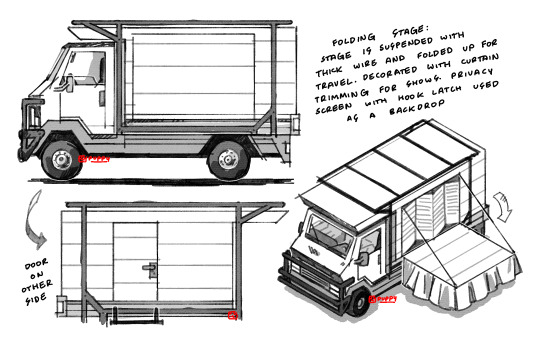
sleights van
#im gonna do the interior tmrw but im pretty happy with how these turned out#i used the volvo laplander as reference for the front and the rest is based on a honda mini pickup truck#the bars around the chassis was an afterthought.. partly bc i thought it would look cool and partly because i thought#it would be good to add something to keep the trailer attachment in place.. i think theyre used more for offroad vehicles though idk#the folding screen is also partly to block out the view of sleights room and its painted with stars to act as a backdrop#idk if the stage is strong enough to support her weight with just thick wires keeping it suspended so.. maybe smth like#a table or chair gets wedged underneath to support it from the bottom too. i just couldnt fit it on there#myart#my art#my oc#oc#sleight#concept art#doodles#vehicles#sketches#wip#idk if im gonna color this i think ill just leave it like this
300 notes
·
View notes
Text



#hsr#honkai star rail#hsr fanart#firefly hsr#hsr firefly#blade hsr#hsr blade#ok anyways i didnt use any reference fkr the car interior and i think it is hilariously obvious#i should do this more often#stelleron hunters#hsr robin#hsr black swan
270 notes
·
View notes
Text
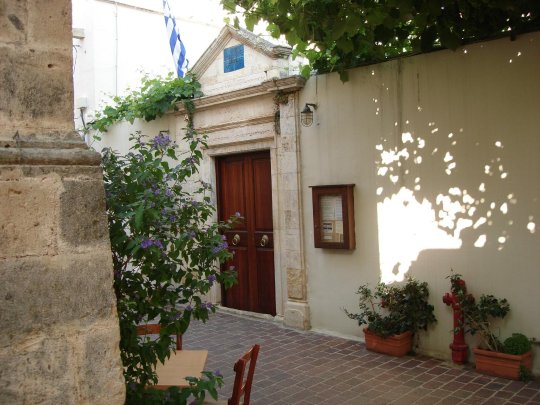
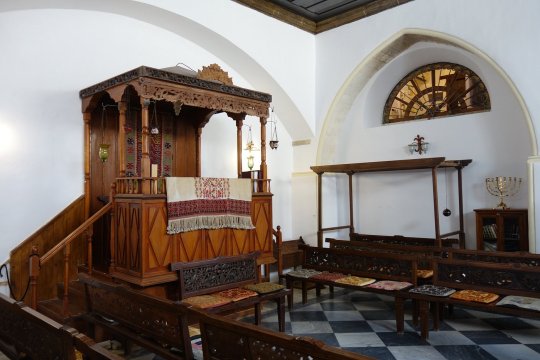
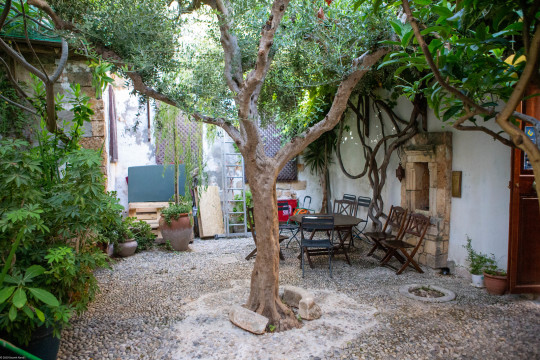
etz hayyim (“tree of life”) synagogue in chania, crete, greece. the building dates to the 14th-15th centuries, and was originally a venetian catholic church. it was acquired by chania's jewish community and converted into a synagogue in the late 17th century. chania's jews were deported due to the holocaust in 1944, after which the building remained abandoned until restoration in the 1990s.
romaniote jews are the oldest jewish community in europe and one of the oldest in the world, thought to have lived in and around present day greece since before 70 ce. they have their own liturgy that is unrelated to the more commonly used european ones (ashkenazic and sephardic).
#greece#architecture#interior#worship#jewish#romaniote#old & new#my posts#for all u Westerners 'rom' = constantinople referring to itself as the roman empire#so rome/italy is like 'west roman' constantinople/greece/anatolia is like 'east roman'#in the west its called 'byzantine' from 'byzantium' (proto-constantinople)#also it insinuates w roman empire was the 'real' roman empire (despite east lasting 1000 years longer)#in most mediterranean & w asian languages greece/greek is 'yunan/yawan/yavan' (from ionians) or 'rum/rom' (from roman)#in actual greek it's 'hellas'/'ellas' (from hellenic)#in georgian it's 'saberdzneti' for some reason but they also have their own names for a bunch of places#'greece' comes from the latin name 'graecia'#in a lot of slavic languages it's some variation of 'greece'. weird considering most were never/hardly under latin influence#if you think this is a lot just wait until u hear about the all the names for armenia#but yeah these guys were also in a lot of the balkans. if you're from the balkans and jewish you MAY have romaniote ancestry#(at least more recent romaniote ancestry than all other european jews)#not a guarantee though especially if you're ashkenazi#theres like. other jewish groups in europe that predated ashkenazi migration#most of them just got absorbed into the ashkenazi population
468 notes
·
View notes
Text
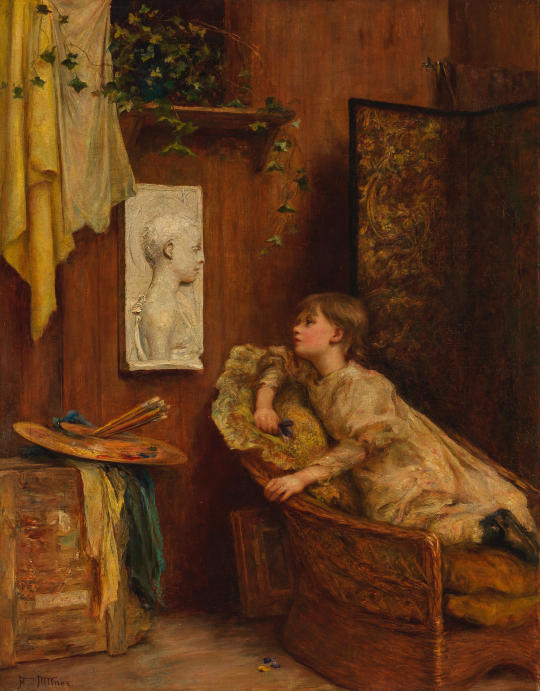
Annie Milnes (British, active 1892-1910): The admirer (via Bonhams)
#Annie Milnes#women artists#women painters#art#painting#nineteenth century#twentieth century#for future reference#kids#interiors#british painters
259 notes
·
View notes
Note
hey!! i really love your posts and trust me when i say this but you're practically doing a work of charity by making all these synonym lists. 😩🫶
i was wondering if you could compile monument vocabulary. vocabulary to describe the intricate and exquisite designs inside historical buildings. tysm!
Some Historical Architecture & Interior Design Vocabulary
Acanthus Leaf - A leaf decoration often used on furniture, particularly on brackets and legs.
Acroterium - Originally an ornament on the roof corners of Greek temples. In classical furniture, similar ornaments applied to the top corners of secretaries, bookcases, highboys and other furniture.
Amorini - Cupid ornaments found on Italian Renaissance furniture.
Anthemion - A honeysuckle design from classical Greek decorative motifs. Term refers to any conventional flower or leaf design.
Antique - Could be anything ranging from a piece of furniture to art. The U.S. government considers any item over 100 years old to be an antique, whereas most collectors use 50 years as a benchmark.
Apothecary Chest - A low chest with small drawers that was originally used to store herbs for cooking and medicinal purposes.
Arabesque - Decorative scroll work or other intricate ornamentation consisting of foliage, vases, leaves and fruits, or fantastic human and animal figures.
Baroque - A highly ornate decorative style that originated in Italy in the 1600's. The style is characterized by irregular curves, twisted columns, elaborate scrolls and oversize moldings. The Italian equivalent of French "rococo".
Bibliotheque-Basse - A low cupboard with shelves for books. Doors are often of glass and sometimes fitted with grilles.
Bullate - Having the surface covered with irregular and slight elevations, giving a blistered appearance.
Cabriole leg - An ornamented furniture leg with a double curve structure.
Chevron - A 'zigzag' pattern characteristic of Romanesque decoration that is often carved around pillars, arches and doorways.
Chinoiserie - A European style of design that is meant to mimic elements of East Asian art.
Console table - A freestanding table, often found in the entryway of homes, that typically serves as a space for decorative elements.
Enfilade - A series of rooms that are connected via doorways that align with one another (commonplace in grand castles, like the Palace of Versailles, or even museums).
Etagere - A freestanding or hanging set of open shelves, designed to display trinkets or other decorative objects.
Gilding - A coating with a thin layer of gold or gold-like substance.
Klismos - Ancient Greek style of chair with saber shaped legs splayed at the front and back. The back legs continue up to support a shoulder-height curved back.
Laurelling - A decorative feature using the laurel leaf motif as its basis.
Lozenge - A diamond shaped decorative panel. Term comes from the Middle English word for stone.
Niche - A recess in a wall for displaying a sculpture or other accessory.
Ormulu - A metal resembling gold. Used as mounts and decorative effects on furniture.
Ovolo - A continuous ornament in the form of an egg which generally decorates the molding called the "quarter-round". Eggs are often separated from each other by pointed darts.
Passementerie - Fancy decorative trimmings such as tassels, tiebacks and ribbon.
Régence Style - This furniture style spanned from about 1715 to 1723, when France was ruled by a regent. This style of furniture design was a transition from massive straight lines to graceful curves.
Sconces - A type of light fixture that is fastened to a wall for support.
Swan-Neck Handle - A curved handle popular in the 1700's.
Trompe l’oeil - A technique used to trick the eye into thinking that something flat, like a wall, is actually three-dimensional. This is often achieved through photorealistic painting.
Victorian - An architectural style defined by highly ornamented design and grand, sweeping facades.
Wainscoting - A type of interior wall paneling that covers the lower portion of a wall.
"Traditional" Interior Design
When talking about traditional interior design, most are referencing a design style that originated in the 18th and 19th century throughout Europe. However, it’s worth noting that other cultures have their own versions of a traditional style that may not look the same as this more Western version.
Traditional Design Elements. Though not exhaustive, a traditional interior will often make use of the following elements:
Emphasis on symmetry and order
Traditional architectural details such wainscoting and crown molding
Classic decor elements such as chandeliers and bookcases
Neutral color schemes with pops of bold colors, often in jewel tones
Upholstery and textiles tend to be subtler (cotton, velvet, or wool, for example)
Furniture pieces with traditional silhouettes, though they’re often updated with modern elements or finishes
Layered window treatments and draperies; curtain valances aren’t used often
Classic patterns such as plaids, damask, or florals
Flooring tends to make use of darker wood
Sources: 1 2 3 4 ⚜ More: Notes & References ⚜ Word Lists
Previous posts that include some related words you might find useful:
Some Architecture Vocabulary
Some European Renaissance Art Vocabulary
Some Medieval Art & Architecture Vocabulary: Part 1
Some Medieval Art & Architecture Vocabulary: Part 2
Some Roman Art Vocabulary
Thanks so much for your kind words, you're really sweet! I tried to include a wide range of terminology since you didn't specify which time period you were looking for. Do go through the sources if I wasn't able to include here what you need in your writing. Hope this helps <3
#terminology#architecture#interior design#writing reference#writeblr#dark academia#spilled ink#literature#writers on tumblr#writing prompt#writing inspiration#history#writing ideas#creative writing#writing resources
69 notes
·
View notes
Text

"Since you've named yourself after Julius fucking Caesar, perhaps I'll follow in your lead and choose one of the conspirators." "Interesting," says Giuliano. "Should I worry about finding you at the center of some kind of conspiracy that ends with my death?" "Not from me," replies Ascanio. He sounds tired. "Not anymore."
informally, some kind of. conversational follow up to the last comic. I'm trying to get the atmospheric conversational whimsy out of my system because I have a vision of the vatican as a body in active decay, a point of infection spreading out and poisoning the well, a jaw unhinged that people walk into over and over, and I am so close to figure out how to convey this visually. maybe.
#not that there's anything wrong with atmospheric whimsy but i kind of want to get into the gross body horror of it all#literally. allegorically. for the vibes. its just hard to pin down the abstract thought of 'oh we should High Rise the Vatican' you know#(High Rise by JG Ballard is what i'm referring to here) like how do I achieve this. well. first. is i must lay out the vatican and become#intimate with the visual set pieces. then i can talk about how this building could literally be hazardous to your health#however. drawing the vatican. is very. uhhhh. man I do not know enough about medieval-renaissance architecture to be inventing#anything and that one book that collected interiors of rooms and houses in renaissance art is NEVER ANYWHERE EVER#and if it is then it's always around when i cannot afford it. i feel like i am in a specific kind of torment torture box#i will not be defeated tho. i can design a vatican through other means.#ANYWAY. i think antidepressants would've made ascanio an unstoppable menace in the vatican#there's a bunch of stuff being referenced here but my pdf reader does not want to cooperate with me so basically we're playing around with#ascanio's household staff (alessandro) that whole thing wrt to ascanio & acts of piety/charity (such as covering dowries etc)#uh. that's it! this time i didn't accidentally call giuliano by his brother's name. which is . sherhhg. so there's a fic i was writing.#italian renaissance tag#komiks tag
136 notes
·
View notes